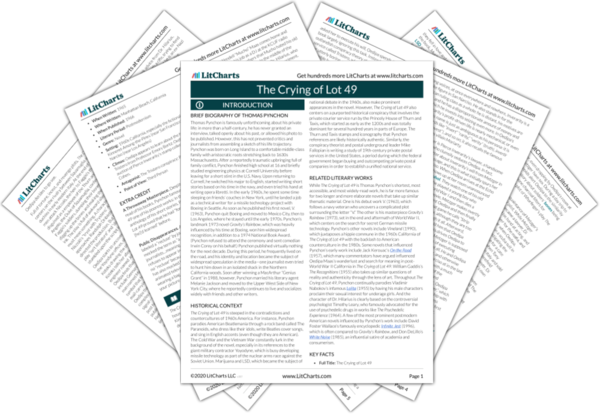At first, when Oedipa only had a few clues to fit together, she felt that she was piecing together something significant. But now, as the clues multiply, no one theory holds together. Oedipa is therefore lucky to run into the sailor, whose heartfelt desire to reconnect with his wife shocks Oedipa back into reality. The sailor reminds Oedipa that the world is made of a web of normal relationships among people, even if she is busy looking for a deep conspiracy behind it all. In a way, he shows Oedipa that, although she might be projecting her world, she is still projecting it
onto real people. The sailor also represents some fleeting hope for the novel’s male characters: in the past, the sailor abandoned his wife (just like so many other men in the novel treat women as disposable). But now, he genuinely regrets what he did—although it is not clear whether this is out of love or mere loneliness.


